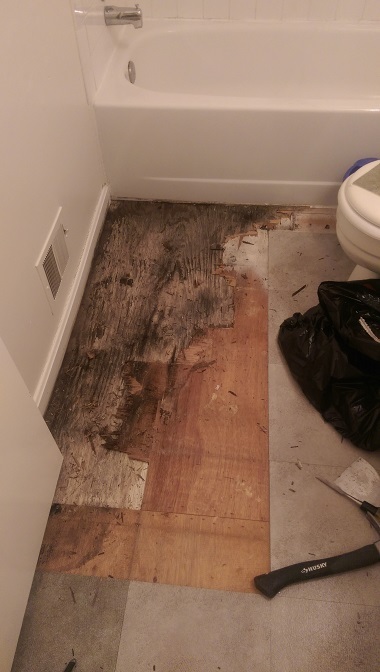Usual Reasons For Water Damage in a Bathroom
Usual Reasons For Water Damage in a Bathroom
Blog Article
Presented here below you can get a good deal of good quality information and facts related to Preventing Water Damage in the Bathroom.

The restroom is extremely prone for moist buildup as well as potential water damages because of the constant use of water in it. This write-up provides straightforward evaluation techniques to aid discovering water damages risks.
The constant use of water in the bathroom makes it very susceptible for wet buildup as well as potential water damages. By checking it regularly, you can lower water associated problems.
The complying with collection of assessments is easy to execute and must be done once in every 3 months in order to keep your shower room in good shape and also to avoid possible water damages caused by the tub, the shower, pipe joints as well as plumbing, sinks, cabinets, and also the toilet
Do not forget carrying out these assessments and be detailed while doing them. Remember that these easy assessments can save you a great deal of cash by offering early signs for water damage
Tub and Shower
The shower and also bathtub call for special focus and upkeep. Check the floor tiles and change if broken. See to it that there is no missing cement in between the tiles. Check and change cracked caulking at joints where the wall surfaces fulfill the floor or the bath tub. Clogged drains pipes and pipelines troubles will protect against the tub from drying out and may suggest serious issues under the bathtub. Talk to a professional promptly to stop structural damages. Take notice of discolorations or soft locations around the tub wall surfaces as they may suggest an inner leak.
Plumbing
Signs for water damages are tough to spot given that many pipelines are mounted inside the walls.
Pay special focus to floor covering and walls dampness and stains as they might show an unnoticeable plumbing issue. Examine dampness levels in adjoining spaces too.
Sinks and Cabinets
Sinks and cupboards are subjected to dampness and humidity everyday as well as are usually forgotten. Inspect frequently under the sink as well as on the kitchen counter over it. Fix any kind of drip in the trap as it may suggest drain issues. Check out the sink, slow-moving draining pipes may indicate a blocked drain. Replace sink seals if they are split or loosened.
The Commode
The commode is an at risk water joint. Examine the water lines and search for leaks around the toilet seat, in the hose pipe, and under the water storage tank. If you discover any type of indications of wetness on the flooring around the bathroom, look for leakages in the toilet edge as well as storage tank seals.
Know that hanging bathroom dish antiperspirants boosts the possibilities for blockages.
10 TIPS TO PREVENT WATER DAMAGE IN THE BATHROOM
The average household uses approximately 80-100 gallons of water per person per day. For a family of 4, that's almost 2,500 gallons of water a week! The largest portion of this consumption comes from bathroom use. Flushing the toilet uses the most water, followed by taking a shower or bath. With that much water running through the home, water damage in the bathroom is bound to happen. Knowing how to spot signs of a water leak is essential to preventing long-term damage. This guide provides you with tips to reduce the impact of water damage on your bathroom.
CAUSES OF BATHROOM WATER DAMAGE
Pipe breaks are the most common cause of water damage we see in our daily jobs. The age of a pipe plays a large role in a pipe break as well as corrosion. Over time, the metal begins to break down, allowing water to escape. Frozen pipe breaks are also a concern in the winter months. Toilet overflows caused by paper products or children flushing inappropriate items. Degraded caulking around the toilet or bathtub can allow water seepage, sometimes behind the fixture, into the subfloor or walls. Condensation forms when the water in a pipe is cooler than the air temperature. Beads of water form on the exterior of the pipes, sometimes so much so that the water begins to drip and pool below. Sink or shower backups created by poor drainage. HOW TO PREVENT WATER DAMAGE IN YOUR BATHROOM
Inspect your toilet supply line for worn or frayed hoses and replace them as needed. Winterize your plumbing to prevent a frozen pipe break. Use vent fans to prevent condensation that can lead to mold growth. Routinely check and replace degraded caulking around your toilet or bathtub. Increase the temperature in your toilet tank and insulate your pipes during the warm summer months to keep condensation from forming. Use child safety locks on the toilets. Flush only toilet paper. "Flushable" wet wipes are actually not good for your plumbing system. Additionally, feminine hygiene products should not be flushed. Prevent water from escaping the tub or shower. Make sure shower curtains are in good condition. Inspect shower doors and replace the seal strip if necessary. Wipe up any water that accumulates on the floor and use bath mats. Water left to sit can cause damage to the tiles and flooring. Refrain from using bath products containing heavy oils to avoid a clogged drain.

I recently found that article on Preventing Water Damage in the Bathroom while browsing the search engines. If you please take a moment to distribute this content if you enjoyed reading it. I love reading our article about How to Fix a Water Damage Bathroom.
Find Out More Report this page